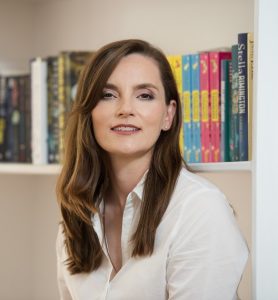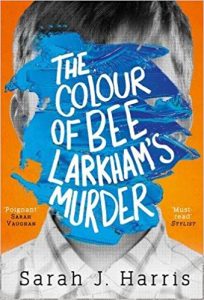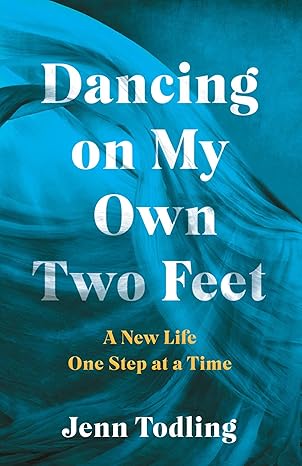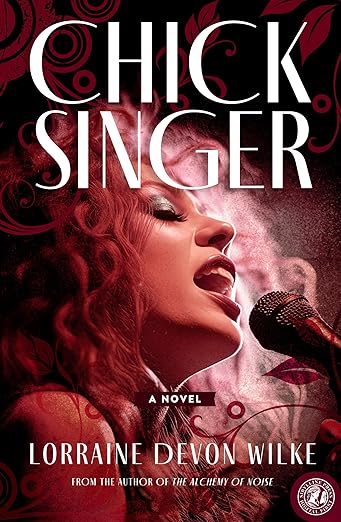Writing About Synaesthesia and Face Blindness: Bee Larkham’s Murder

Photo by Philippa Gedge
I FIRST came across synaesthesia – which is at the heart of my novel, The Colour of Bee Larkham’s murder – during my work as a freelance education journalist.
Researchers at Edinburgh University had carried out the first ever study into the prevalence in childhood of the condition that causes a ‘merging of the senses’.
Synaesthetes experience together two or more of the five senses that are usually experienced separately.
Some people might, for example, experience colour when they read words or hear sounds – the purple streaks of a closing window – while others may taste words, enjoying strawberries and cream with a greeting of ‘hello’.
At the time of the Edinburgh University research, I had an education column in a national newspaper and I wrote a feature about children and synaesthesia.
Researchers estimated that the average UK primary school had at least two pupils who experience colour when they hear or see words. But they warned of a lack of awareness in schools.
The findings stayed with me long after my feature was published. I often wondered what it must be like for a child when people struggle to understand their daily experiences – or simply don’t want to know.
I kept cuttings from newspapers and magazines about synaesthesia and also avidly read up on another condition called prosopagnosia or face blindness, which interests me greatly.
The inability to recognise familiar faces affects about one in 50 people and can be particularly stressful – and dangerous – for children. Among the pupils in a corridor at school, who is their real friend and who is their tormentor? Outside the school gates, who is their mum? Who is a total stranger?
I knew I wanted to write a novel that combined the joy of seeing a world through colour, with the dangers of never really knowing who to trust.
My main character, 13-year-old Jasper Wishart, eventually came to me in a dream – a harrowing image of a young boy tearing across a suburban street at night, terror etched on his face.
When I woke up, I wondered if a particular colour could have traumatised the boy.
Perhaps he had face blindness and identified people by the colour of their voices. What if the voice colour of someone he knew had transformed to a horrifying shade as they screamed? What if he had seen the colour of their murder?
The book grew from that single image but I wanted to make sure that my representations of synaesthesia and face blindness were as accurate as possible. As a result, I undertook a huge amount of research.
I started off by interviewing experts in synaesthesia – Jamie Ward, professor of cognitive neuroscience at the University of Sussex and Dr Mary Jane Spiller, senior lecturer in the school of psychology at the University of East London. Both were tremendously helpful and encouraging.
I also wanted to talk to synaesthetes themselves and was aided by James Wannerton at the UK Synaesthesia Association and Professor Sean Day, from Trident Technical College, South Carolina, who runs the world famous Synesthesia List. Both put out appeals for potential interviewees.
I was overwhelmed with the response and the generosity of the synaesthesia community in terms of their help and advice – people got in touch from the UK, Germany and the US. I quizzed synaesthetes about the colours they saw for sounds such as a front door slamming, a doorbell ringing, a bird singing, and realized that everyone saw completely different things. I decided to construct my own sound/colour schemes to make the palette individual to Jasper. As a result, I kept large spread sheets detailing the colours for every single sound I mentioned in the book.
I talked to people with face blindness to discover how they used ‘markers’ to distinguish between faces and how they coped with everyday life. I interviewed Hazel Plastow from Face Blind UK and double-checked essential plot points with her.
I was also inspired by wild ring-necked parakeets, which I often see bickering in my back garden and local parks. I imagined Jasper standing at his bedroom window with binoculars, enjoying the vivid colours of their songs. I interviewed wildlife experts about their nesting habits and plotted my novel on a calendar from the date the parakeets first arrived on Jasper’s street, through to their nesting, the birth of the nestlings and the departure of the fledglings, which Jasper so dreads.
I knew that Jasper loved to paint the colours of the parakeets songs using acrylics, as well as the colour of people’s voices to help remember their identities. I visited an artist who teaches my children at a local art workshop and together we mixed the colours I wanted to use for different voices – and also for the colour of murder. I wanted to be able to describe the crucial painting – Ice Blue Crystals with Glittery Edges and Jagged, Silver Icicles – as authentically as possible because I knew Jasper must also attempt to recreate the horrifying scene in Bee’s kitchen.
The research was crucial – and I have to say, thoroughly enjoyable. I still paint with my children and watch the parakeets in my back garden from my study window as I write my next book.
I remain a member of Sean Day’s Synesthesia List – reading daily updates from synaesthetes across the world – and have since become a member of the International Association of Synaesthetes, Artists and Scientists (IASAS).
I’m not quite ready to let go of Jasper’s intriguing world. I hope you will want to experience it too.
—
Sarah.J.Harris is an author and freelance education journalist who regularly writes for national British newspapers. She is the author of the young adult series Jessica Cole: Model Spy, written under her pen name, Sarah Sky. She lives in London with her husband and two young children. The Colour of Bee Larkham’s Murder is her first adult novel.
Find out more about her on her Website https://www.sarahjharris.com/
Follow her on Twitter https://twitter.com/sarahsky23
About LEE LARKHAM’S MURDER
 “In this fantastic debut, Harris enters the technicolor mind of thirteen-year-old Jasper Wishart…Readers enamored of The Curious Incident of the Dog in the Night-Time and The Rosie Project will delight in Harris’s sparkling novel.” –Publishers Weekly (starred review)
“In this fantastic debut, Harris enters the technicolor mind of thirteen-year-old Jasper Wishart…Readers enamored of The Curious Incident of the Dog in the Night-Time and The Rosie Project will delight in Harris’s sparkling novel.” –Publishers Weekly (starred review)
A captivating mystery about a boy with synesthesia—a condition that causes him to see colors when he hears sounds—who tries to uncover what happened to his beautiful neighbor, and if he was ultimately responsible.
Thirteen-year-old Jasper Wishart lives in a world of dazzling color that no one else can see, least of all his dad. Words, numbers, days of the week, people’s voices—everything has its own unique shade. But recently Jasper has been haunted by a color he doesn’t like or understand: the color of murder.
Convinced he’s done something terrible to his new neighbor, Bee Larkham, Jasper revisits the events of the last few months to paint the story of their relationship from the very beginning. As he struggles to untangle the knot of untrustworthy memories and colors that will lead him to the truth, it seems that there’s someone else out there determined to stop him—at any cost.
Both a refreshing coming-of-age story and an intriguing mystery, The Color of Bee Larkham’s Murder is a poignant and unforgettable read—perfect for fans of bestselling authors such as Fredrik Backman and Graeme Simsion.
Buy the book HERE
Category: Contemporary Women Writers, How To and Tips




























